
Competitive benchmarking is a strategy employed across industries, allowing businesses of all sizes to measure their performance against competitors and set internal standards. It provides a framework for operational excellence and strategic insight, proving invaluable for companies aiming to navigate the complexities of their industry landscapes.
Moving forward, we will analyse its definition, the benefits it offers, and practical steps for implementation. This exploration will highlight how businesses can utilise competitive benchmarking to enhance their competitive edge in today’s dynamic market environment.
Competitive benchmarking is when a company looks at what its competitors are doing in order to compare. It checks things like products, services, processes, and performance. The goal is to see where it stands in comparison to others in the industry, find out what they are doing better, and learn from it. This way, the company can identify areas where it can improve, figure out its strengths, and use this information to make better decisions and strategies.
Competitive benchmarking and competitive analysis are crucial for any business aiming to secure a strong foothold. While both tools are vital for strategic planning, they serve distinct purposes and yield different insights.
Competitive benchmarking involves measuring your business performance against that of competitors using specific indicators. This strategy focuses on examining processes, products, services, and practices to identify both areas of excellence and those needing enhancement. The goal is to not only understand competitors’ strengths and weaknesses but to leverage this knowledge to improve your own business performance.
Competitive analysis, meanwhile, offers a broader perspective on the competitive environment. It involves identifying your primary competitors and evaluating their products, sales, marketing strategies, and market position. The aim is to gain a comprehensive understanding of the industry landscape and your place within it, identifying both opportunities and threats.

The advantages of embarking on a competitive benchmarking journey are multifold:
Focus: Examines the efficiency and effectiveness of business processes.
Key Comparisons: Workflow, procedures, and operational techniques.
Objective: Identify and adopt industry best practices to enhance operational efficiency.
Industries: Applicable across various industries, especially where operational processes can be clearly defined and measured.
Data Sources: Process documentation, operational data, industry reports.
Focus: Measures specific performance metrics against those of competitors.
Key Comparisons: Speed, quality, cost, and other quantifiable performance indicators.
Objective: Gauge competitiveness and identify areas for performance enhancement.
Industries: Widely applicable, from manufacturing to services, where performance can be quantified.
Data Sources: Financial reports, customer feedback, industry benchmarks.
Focus: Analyzes the long-term strategies of successful companies.
Key Comparisons: Business models, market positioning, growth strategies.
Objective: Gain insights for strategic planning and competitive positioning.
Industries: Best suited for industries undergoing rapid change or those with clear leaders.
Data Sources: Strategic plans, industry analysis reports, market research.
Focus: Compares the characteristics of a company’s products with those of industry leaders.
Key Comparisons: Features, quality, user satisfaction, and performance.
Objective: Identify areas for product improvement or innovation.
Industries: Particularly relevant in consumer goods, technology, and automotive sectors.
Data Sources: Product reviews, customer feedback, competitive analysis.
Comparative benchmarking is a targeted approach within the realm of competitive benchmarking, where a company compares specific aspects of its operations, products, or strategies directly against those of its closest competitors. This method focuses on detailed comparison points, allowing organizations to measure their performance against very specific benchmarks set by their competition.
The goal of comparative benchmarking is to identify areas where a company can improve by looking at the exact metrics or qualities that make competitors successful. It can cover a wide range of elements, from product features and customer service practices to operational efficiencies and marketing strategies. This type of benchmarking is particularly useful for organizations aiming to enhance their competitive edge in areas directly impacting customer choice and market dominance.
Key characteristics of comparative benchmarking include:
– Direct Comparison: It involves a head-to-head comparison with competitors on specific aspects, making it easier to pinpoint where improvements are needed.
– Actionable Insights: By focusing on specific comparison points, organizations can generate actionable insights that directly contribute to strategic planning and execution.
– Objective Analysis: This benchmarking relies on measurable data, providing an objective basis for analysis and decision-making.

Measures the percentage of an industry's sales that your company captures, indicating your company's competitiveness and appeal to customers. Gather your sales data and determine the total industry sales. Finally calculate your market share = Sales figure data/ industry sales x 100

Tracks the rate at which your company's revenue is growing over time, compared to competitors, highlighting market position and growth potential. Gather competitors' revenue data Revenue Growth Rate= [(Current Period Revenue−Previous Period Revenue)/Previous Period Revenue]×100%

Compares your profit margins (gross, operating, and net) with those of your competitors to assess financial health and operational efficiency. calculate each marging type for your business and then find or estimate the figures for your competitors. gross profit margin operating profit margin net profit margin
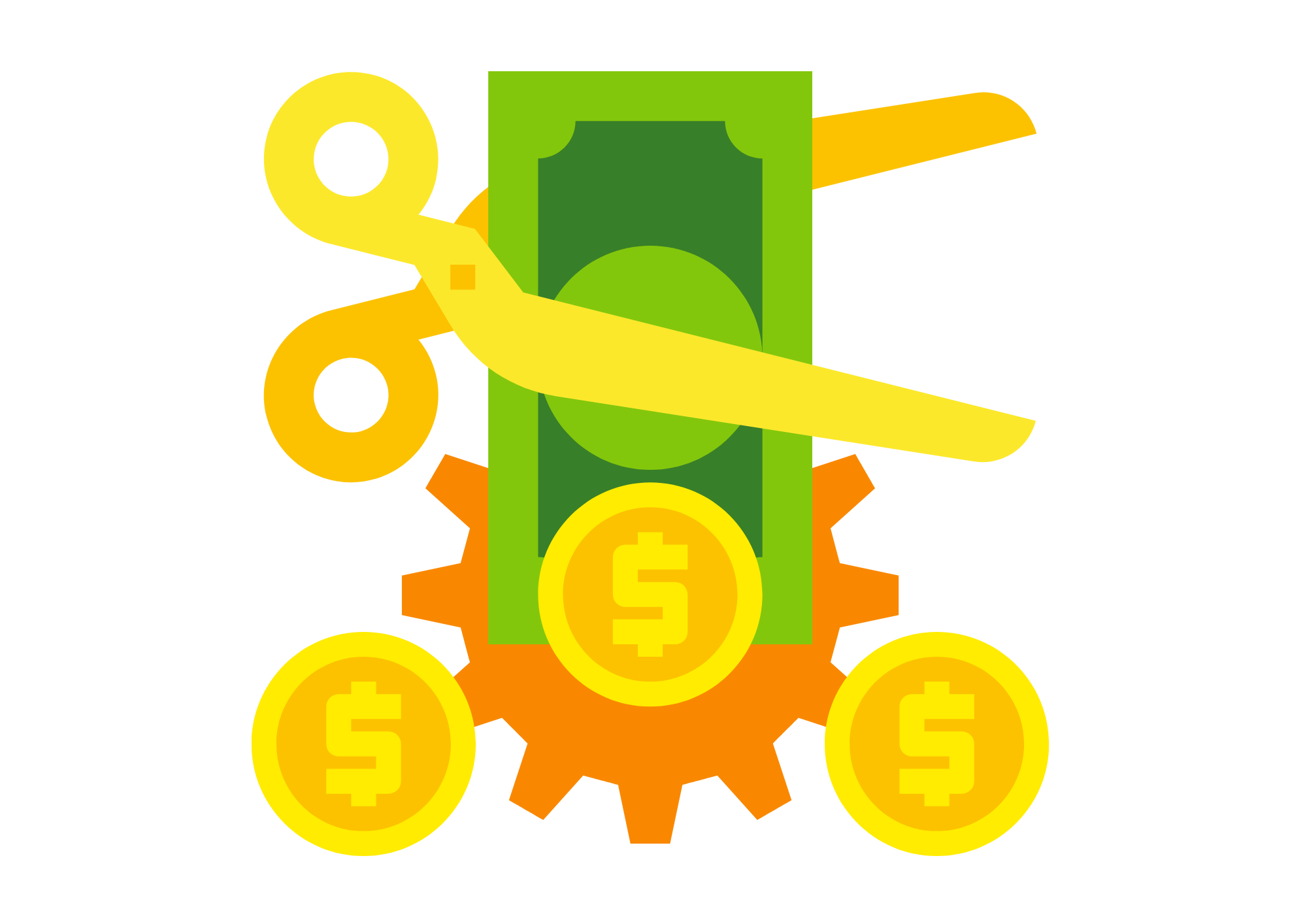
Looks at the cost of production, operation, and other key activities in comparison to competitors, identifying opportunities for cost reduction and efficiency improvement.

Product Quality: Measures the quality of your products or services against competitors, often through customer feedback, return rates, and quality awards

Employee Satisfaction and Turnover: Gauges employee satisfaction levels and turnover rates in comparison to industry norms, reflecting on company culture and operational stability.

To analyze your digital presence and understand your competitiveness in the digital domain, focusing on key online metrics is crucial. These metrics include website traffic, social media presence and engagement, search engine results page (SERP) keyword rankings, and social mentions.
Competitive benchmarking is a process where a company compares its products, services, processes, and practices against those of its competitors. It’s a strategic management tool that helps organizations identify where they stand in comparison to their competitors and discover areas of improvement. The four steps of competitive benchmarking generally involve identifying what to benchmark, choosing competitors for comparison, collecting data, and analyzing the data to implement changes.
Identify Competitors
The journey begins with identifying who your real competitors are. Your true competitors are those targeting the same audience segments with offerings that either match or substitute your own. It’s not just about who is present in your industry, but about who occupies the mind and consideration space of your potential customers. You can also use our tool to find competitors.
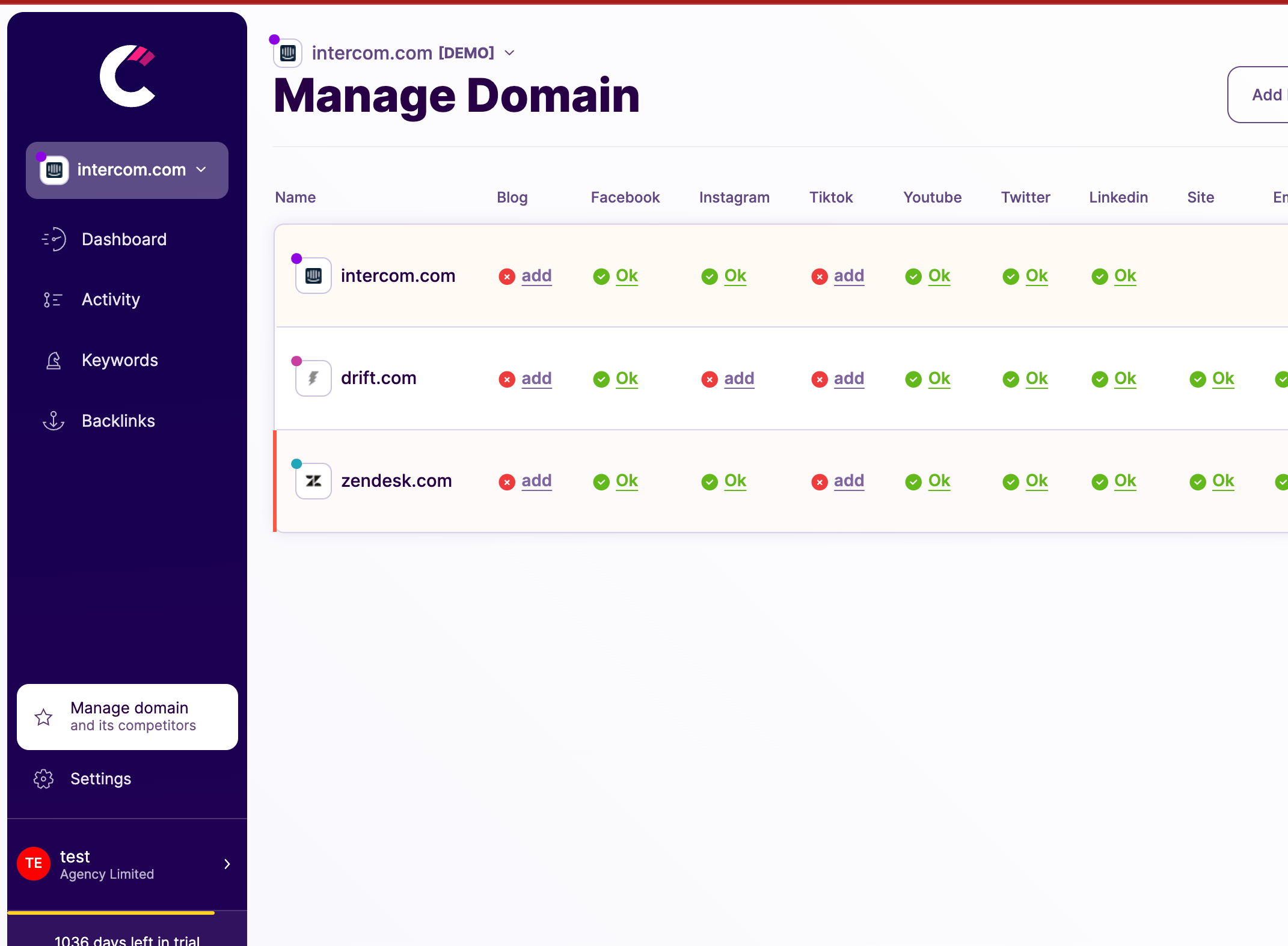

Add Them to Competitors App
Once you’ve pinpointed who your competitors are, the next step is to bring technology into the mix. The Competitors.app serves as your digital lookout, enabling you to keep a close eye on your competition without dedicating hours manually monitoring their activities. It’s about preparing your dashboard to capture all the relevant moves your competitors make, be it on social media, in their advertising campaigns, or any significant changes on their websites.
Navigate to the Dashboard
The next phase is to use the dashboard. Here is were you can benchmark yourself against competitors. From social media engagement and ad campaigns to important news updates and website changes, the dashboard aggregates a wealth of information. This consolidated view saves you from the hassle of juggling between multiple platforms and tools, providing a cohesive overview of your competitive landscape.


See Specific Competitive insights
The forth step involves delving into the specifics of what your competitors are doing, particularly in areas like social media and ads, their most important news, and through comprehensive competitor analysis and website monitoring. This stage is crucial for understanding not just the actions of competitors, but the effectiveness of those actions. Businesses can observe which strategies are gaining traction, the types of campaigns that are launched, how often competitors update their websites, and the nature of content that engages their audience.
Analyze Data and Draw Insights
The final step in the competitive benchmarking journey is where the magic happens: analysing the collected data to draw actionable insights. This is where you move beyond observation to strategic action. By examining your competitors’ successes and missteps, you can uncover opportunities to adjust your strategies, optimize your marketing efforts, and ultimately, carve out a stronger position in the market. You can also do a more comprehensive analysis by using our competitor analysis template or sales battlecards template.

There are many examples of competitive benchamrking. Here is an example of how we use our pltaform:
We conducted a comprehensive analysis of leading CRM and email automation platforms like ActiveCampaign, HubSpot, and Mailchimp, focusing on their marketing strategies across advertisements, social media, and customer reviews. This benchmarking exercise aimed to identify each platform’s unique selling points, target audience, and overall market positioning by analysing their ad spend distribution, social media engagement, and public perception. This analysis provides insights into effective marketing practices within the highly competitive email automation industry, highlighting opportunities for strategic positioning and customer engagement (read more).
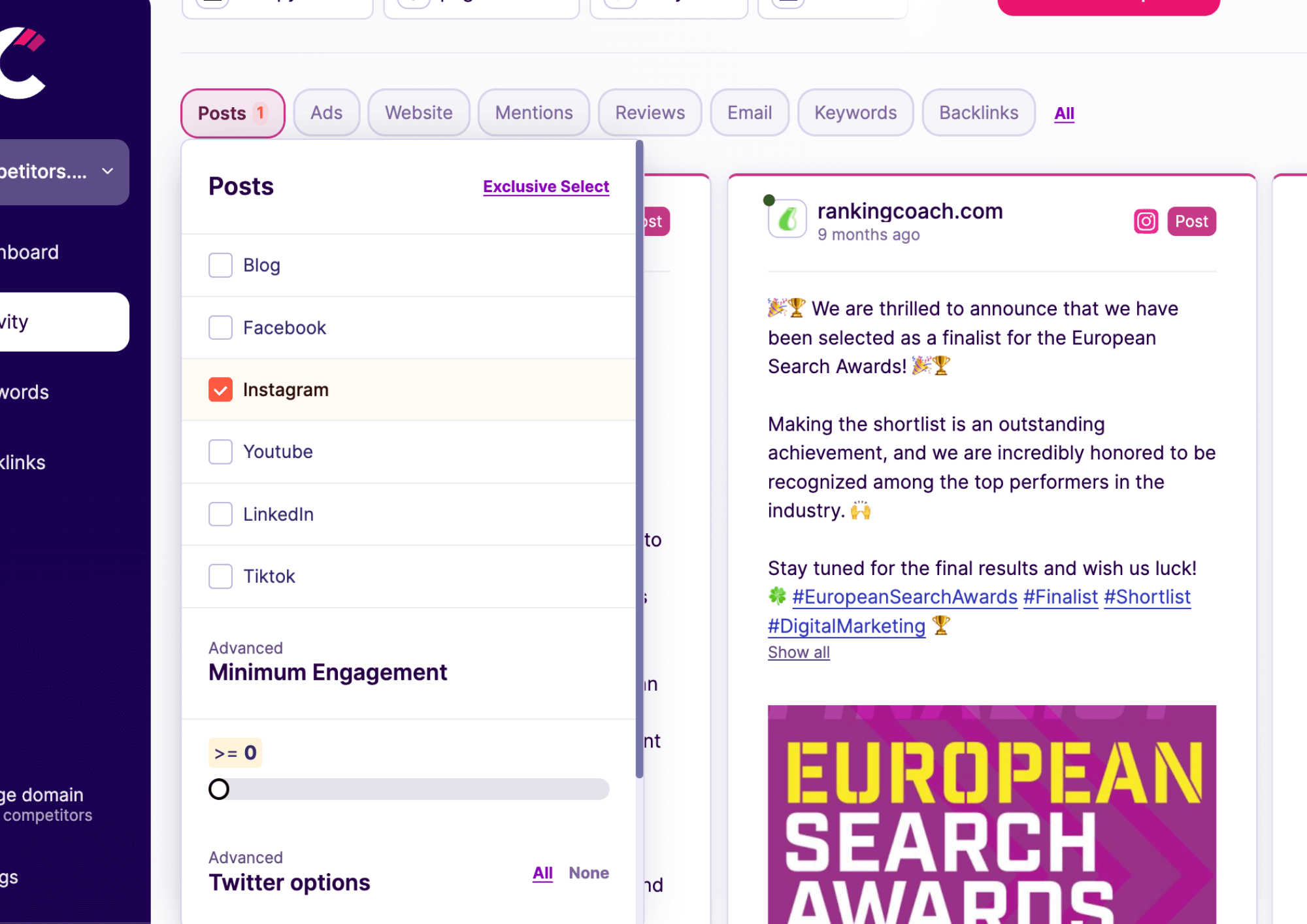
Use Competitors App to benchmark your social media performance to competition. See followers, engagement, and overall growth.

Use Competitors App to monitor website traffic and identify which competitor gets the most traffic and why.

Compare how you and your competitors rank against top keywords in the market and what to do to improve.

Analyse the number of positive vs negative reviews and take action if you see the negative reviews of a competitor growing drastically.

This tool specifically zeroes in on monitoring your competitors providing updates on their rankings, marketing strategies, and more.

This tool offers detailed insights into your competitors' activities. Its strength lies in its ability to monitor a wide range of sources, including websites, social media platforms, review sites, and more

Klue stands out for its ability to aggregate data from a wide variety of sources, including public data, proprietary data, and team inputs, making it a comprehensive platform for competitive intelligence.

A competitive benchmarking framework is a structured approach used to compare their processes, products, services, and strategies against those of their key competitors.
Don’t forget to continuously track performance against benchmarks and make adjustments as necessary to improve competitive positioning over time.
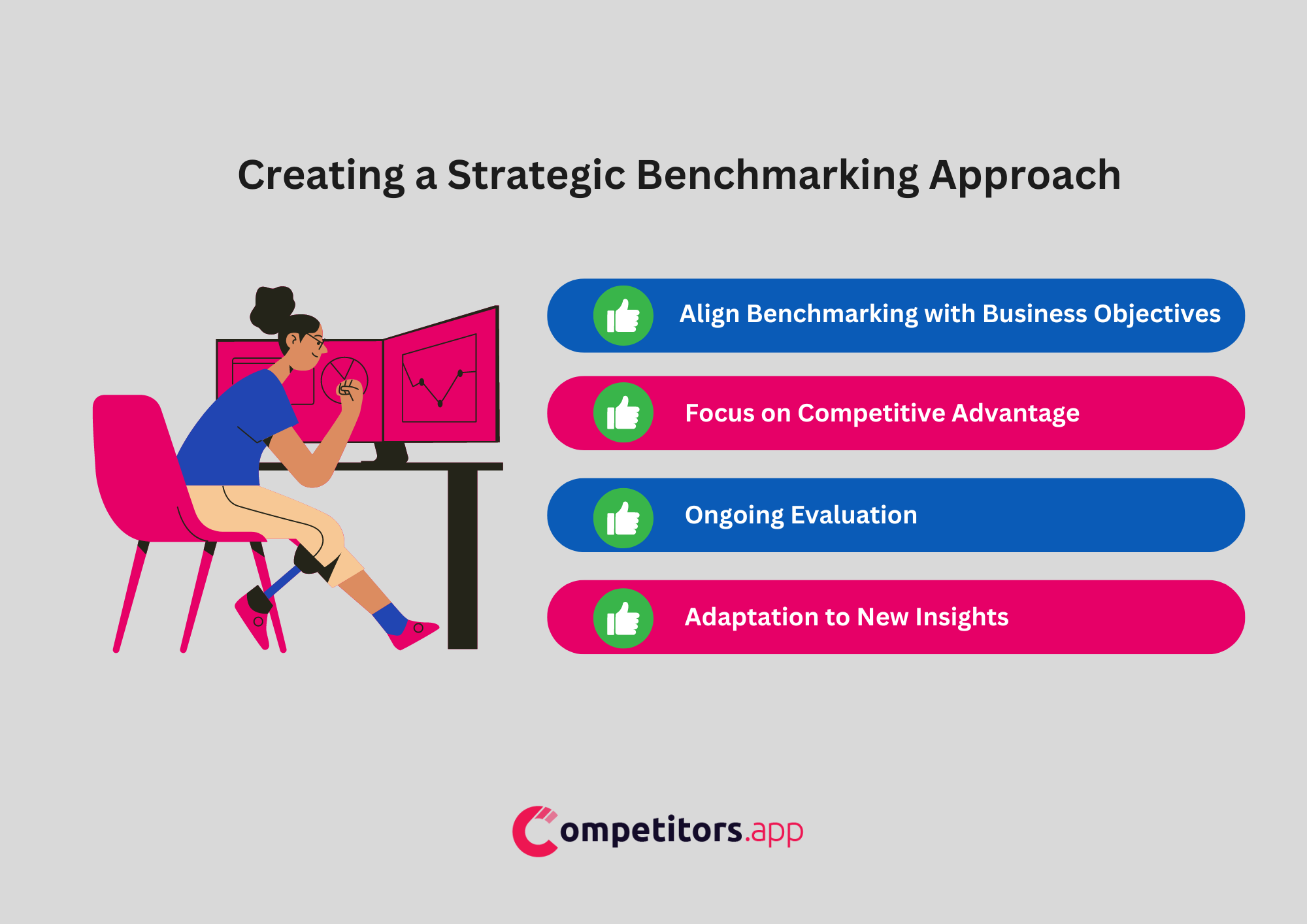
– Align Benchmarking with Business Objectives: Ensure that your benchmarking activities directly support your overall business goals.
– Focus on Competitive Advantage: Concentrate on areas where benchmarking can significantly impact your competitive standing in the market.
– Ongoing Evaluation: Regularly assess the effectiveness of your benchmarking strategies to ensure they remain aligned with changing business needs and market conditions.
– Adaptation: Be prepared to modify your strategies in response to new insights gained from benchmarking and shifts in the competitive landscape.
– Avoid focusing too narrowly on a single aspect of performance at the expense of a broader strategic view.
– Don’t underestimate the importance of internal benchmarking to understand your own performance trends.
– Beware of becoming too fixated on competitors, which can lead to imitation rather than innovation.
Challenges | How to overcome them |
Difficulty accessing comprehensive data | Leverage both primary (surveys, interviews) and secondary research methods (industry reports, databases). Partner with data providers and consider subscription services for exclusive market data. |
Ensuring data accuracy and relevance | Establish a validation process, cross-reference data, and implement a regular review cycle. Use predictive analytics to forecast future trends and adjust benchmarks accordingly. |
Adapting to rapid market changes | Develop a flexible benchmarking framework and use agile methodologies for frequent revisions. Stay informed on industry trends through newsletters and professional networks. |
Managing information overload | Focus on strategically important data, use data management tools, and automate collection and analysis to efficiently manage large volumes of information. |
Streamlining data collection from reliable sources | Identify and prioritize credible sources, automate data collection with web scraping tools and APIs, and build relationships for data sharing agreements. |
Regularly updating benchmarks for current market conditions | Implement a scheduled review process, utilize real-time data feeds, and use cloud-based tools for dynamic updates and alerts on significant benchmark deviations. |
Focusing on key performance indicators (KPIs) relevant to goals | Clearly understand strategic objectives, select directly aligned KPIs, limit the number to critical ones, and regularly review and adjust KPIs as objectives evolve. |
Utilizing analytical tools for efficient data analysis | Choose tools and software that integrate well together to ensure good data flow. |


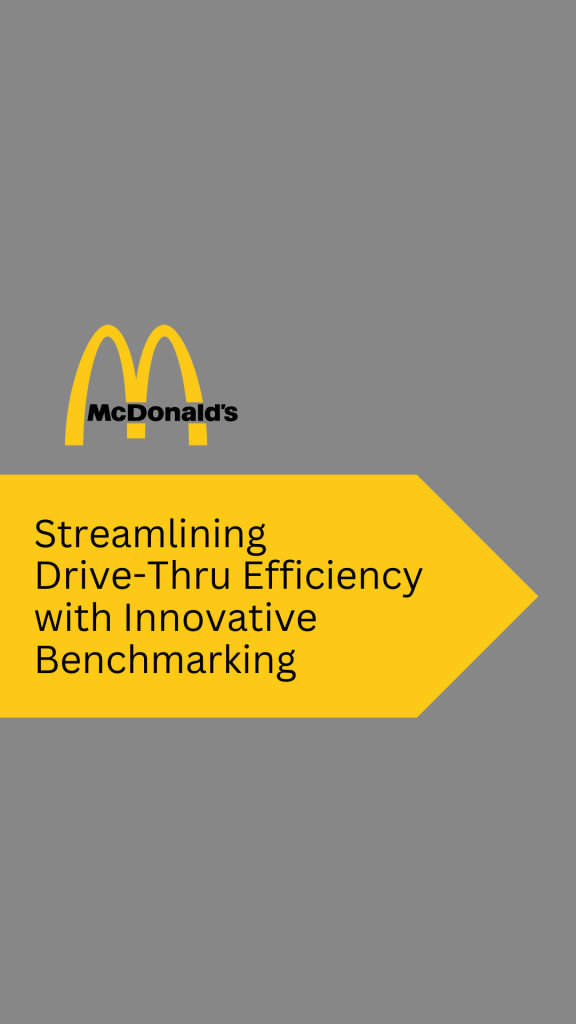
The automotive behemoth from Japan, Toyota, is lauded for its dedication to Total Quality Management (TQM) and the ethos of perpetual enhancement. In a landmark move during the 1980s, Toyota embarked on a benchmarking journey, scrutinizing the manufacturing methodologies of giants like Ford and General Motors. The insights gleaned from these industry leaders were instrumental in Toyota’s creation of its celebrated Toyota Production System (TPS). This system, which set new standards across the automotive sector, underscored the principles of minimizing waste, empowering workers, and implementing just-in-time production tactics.
Amazon, the titan of e-commerce, has unwaveringly prioritized delivering superior customer service. By benchmarking against the best, notably Walmart’s supply chain prowess, Amazon gleaned crucial insights to bolster its logistics and inventory control mechanisms. Embracing the efficient supply chain models of Walmart allowed Amazon to significantly boost its delivery efficiency and heighten customer satisfaction, reinforcing its position as a leader in the global e-commerce space.
McDonald’s, the iconic fast-food conglomerate, has adeptly harnessed the power of benchmarking to refine its operational efficacy, particularly in its drive-thru service. Drawing inspiration from the high-octane efficiency of Formula One pit crews in the late 1990s, McDonald’s analyzed their coordination, teamwork, and precision. Implementing these lessons transformed McDonald’s drive-thru service, achieving swifter service delivery and elevating customer satisfaction across its global outlets.
No, businesses of all sizes can benefit from benchmarking to improve their competitive position.
It depends on the industry and market dynamics, but regularly reviewing and updating your benchmarks is advisable.
Yes, by identifying gaps in the market or areas where competitors are underperforming, you can uncover opportunities for differentiation and innovation.
Financial reports, customer feedback, market research, and industry benchmarks are critical data sources.
Potential risks include becoming too reactive to competitors' actions or misinterpreting data, which can be mitigated through careful analysis and strategic focus.
Small businesses can focus on freely available data and prioritize key areas for benchmarking to manage costs effectively.
External benchmarking looks at industry-wide standards, while competitive benchmarking specifically compares your business to its competitors.
It involves comparing the user experience of your products or services against those of your competitors to identify areas for improvement.